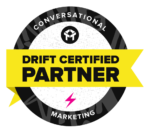When it comes to key account marketing, our approach includes the following steps:
1. Define your Ideal Customer Profile (ICP)
Who is the ideal customer? What is their title? Company size? Industry? Geography? If possible, what are technologies are they using?
2. Identify key accounts that match the ICP
It is impossible to sell to companies unless you have those companies in your database. A great list of accounts isn’t built overnight.
3. Identify and source relevant decision-makers and influencers at those accounts
Once your key accounts have been identified, the next step is to identify the right people to target at these accounts and add data if they are not already part of your existing database. More is better because getting to the perfect decision-maker sometimes happens indirectly. Influencers matter too, as they can often accelerate access to the right person. For more information, about building lists, take a look at CleanMyCRM – one of Macon Raine’s ventures or our B2B data services.
4. Get the technology right
CRM, marketing automation, Google analytics, and more – you can’t do account-based marketing well without these tools. If your current technology isn’t up to snuff, we can help you get there quickly. We’re a Google Partner and power users of Salesforce, Dynamics CRM, Pardot, Marketo, Hubspot and a few others. In this account-centric approach, it’s critical that you have full visibility into all the leads and contacts for a given account… and how or if they engage.
5. Segment and Prioritize
In many cases, resources are an issue. If your market is big and if you are targeting a large number of accounts, then it makes sense to really segment and prioritize accounts. A number of top accounts can get dedicated analysis and oversight while other small accounts receive more traditional demand generation activities.
6. Teach your BDR’s how to use the technology
All the technology in the world is useless unless it is being used consistently. From a process standpoint, we’ll help you understand how to best leverage your BDRs and your inside sales team to make data collection more efficient. We can help with technology training, core messaging (battle cards), competitive talking points and more. We can even help implement social selling so your BDRs are notified when known and anonymous site visits happen.
7. Message definition
To really do this right, we’ll help you with critical insights about your target accounts and help define messaging that resonates at multiple levels of engagement.
8. Create offers across all relevant channels
Armed with insight, we’ll apply your existing content in new and unique ways. If you don’t have content and offers, we’ll help you translate those insights into compelling white papers, articles, interactive and social assets that are aligned with your top, mid and bottom-funnel offers across multiple channels.
9. Execute
All campaigns are executed against monthly sprints using multiple touch points which sometimes (oh the humanity) include highly targeted direct mail.
10. Wash, Rinse, Repeat
With all the right tools in place and with execution taking place against defined accounts, measuring progress is much easier than most would imagine. Depending on the complexity of your technical infrastructure, we can help you use lead scoring and multi-touch attribution to get as granular as you want.
GETTING STARTED WITH KEY ACCOUNT MARKETING: A PILOT PROGRAM
So assuming you’re interested in our key account marketing process, it’s time to roll-out a small test. Does the increased focus on key accounts justify the financial investment?
We generally recommend a test/control methodology where we carve out a single territory and partner with your BDRs to execute the strategy. Over that same time period, your other geographies or territories receive your typical marketing offers as normal. At the end of the test, you’ll know whether key account marketing is right for you.
Want to talk more? Get in touch.








